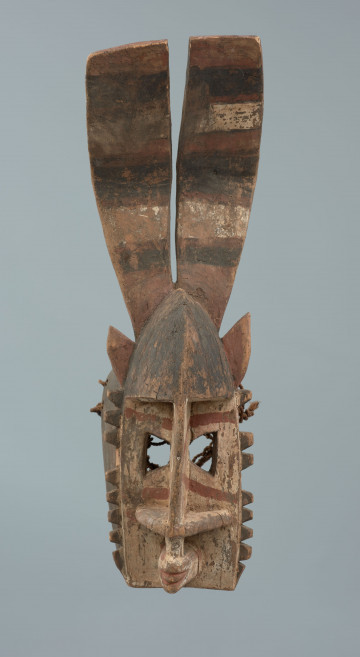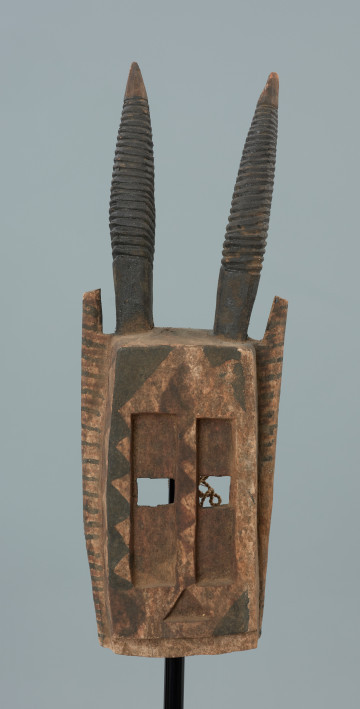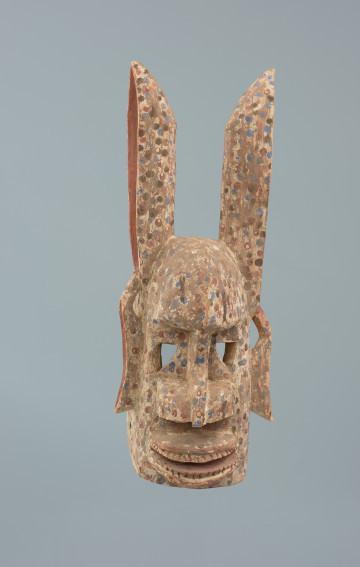
Gomintogo mask
między 1951 — 2000
National Museum in Szczecin
Part of the collection: Collection of Dogonian art
The variety of Dogon masks is extraordinary. There are about 78 different types. Among them animals are well represented: mammals, birds and reptiles. Animal masks protect people from the life force of nyama, i.e. animals killed in hunting.Antelope masks are among the most popular. They are admired by the Dogon for their beauty and their strength and endurance. The antelope masks include ka (in the Sigi-so language tãna wao - horse from the bush), karanda (in the Sigi-so language tãna nemdyu - meat from the bush), karanjana (in the Sigi-so language tãna soru - a spear from the bush), kęlęmo jeñe (in the Sigi-so language tãna sono - a goat from the bush), sono (in the Sigi-so language tãna sono - a goat from the bush), gorugu (in the Sigi-so language tãna ligiri), wilu (in the Sigi-so language tãna sono - a goat from the bush) and walu (in the Sigi-so language tãna wao - a horse from the bush). These are different species of antelope, sometimes very difficult to identify. In the Dogon, masks are usually made by men, members of the Awa society, the same ones who later dance in them. However, the carving of the wooden part of the mask is sometimes commissioned to a blacksmith who, in addition to possessing highly respected ironworking skills, is considered by the Dogon to be a master of wood. The mask is an object/being forbidden to the eyes of women and children. It also applies to its making. When a man prepares his mask in the enclosure, his wives, mother and children must leave. In common parlance, the word mask refers only to the facial part. In fact, a Dogon mask is the whole figure, dressed in complete costume, holding appropriate props in the hands. An important element of the mask cult is the buguturu altars dedicated to them, where the masks are sacralised and sacrifices are made to ensure the protection of the dancers.
Ewa Prądzyńska
Author / creator
Dimensions
cały obiekt: height: 111 cm, width: 21 cm
Object type
sculpture, mask
Creation time / dating
Creation / finding place
Identification number
Location / status

między 1951 — 2000
National Museum in Szczecin

między 1976 — 2000
National Museum in Szczecin

między 1951 — 2000
National Museum in Szczecin
DISCOVER this TOPIC
National Museum in Lublin
DISCOVER this PATH
Educational path